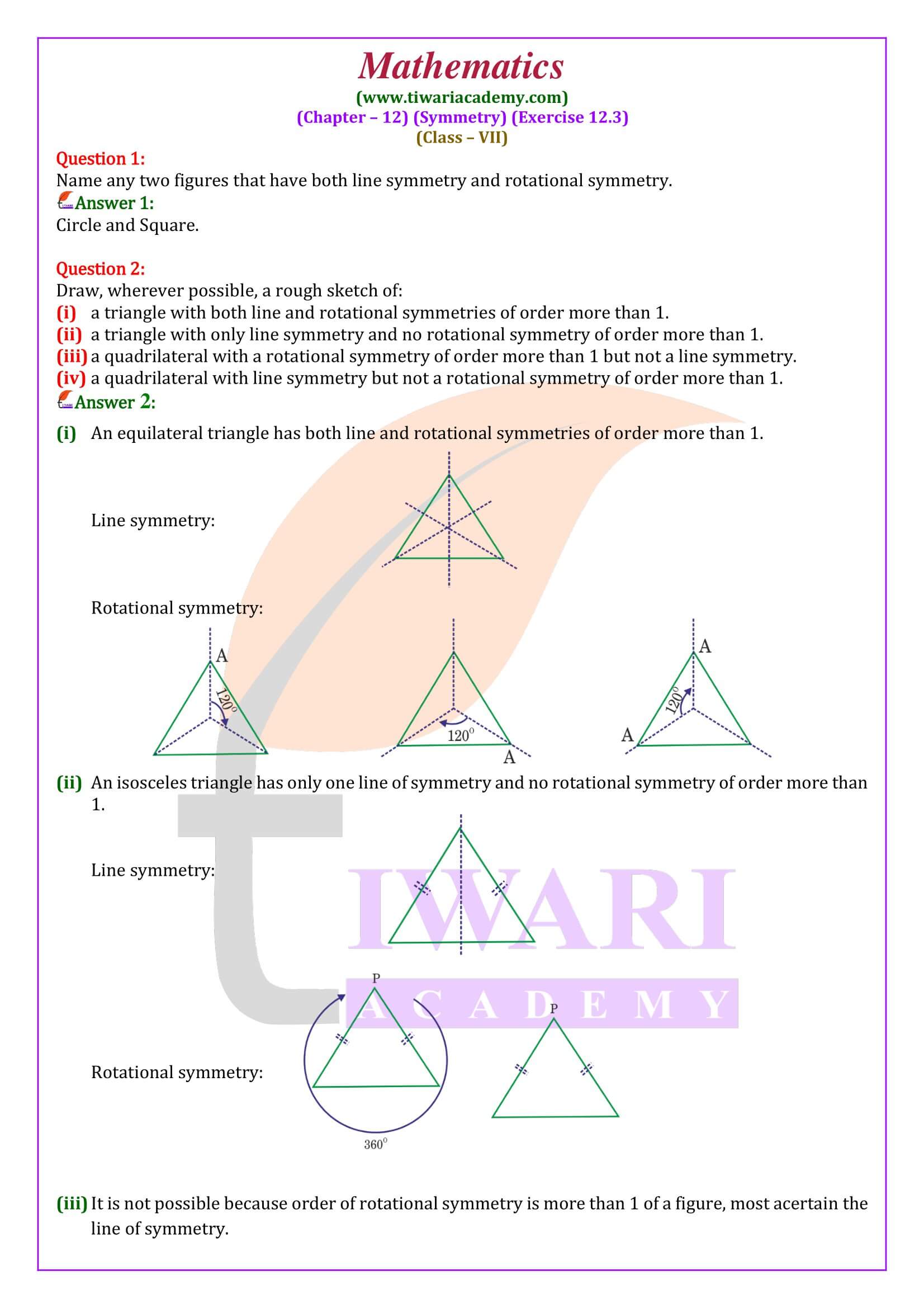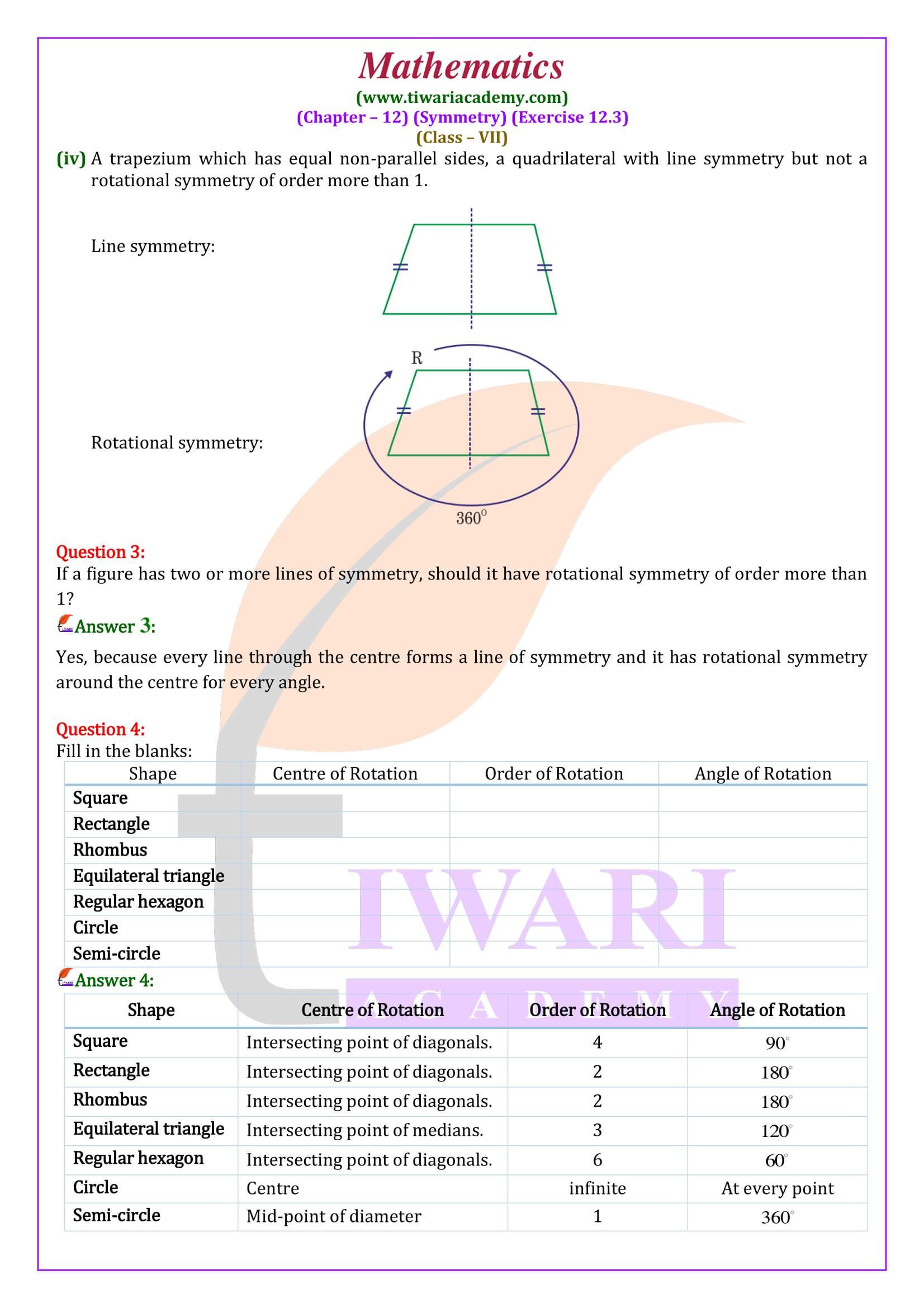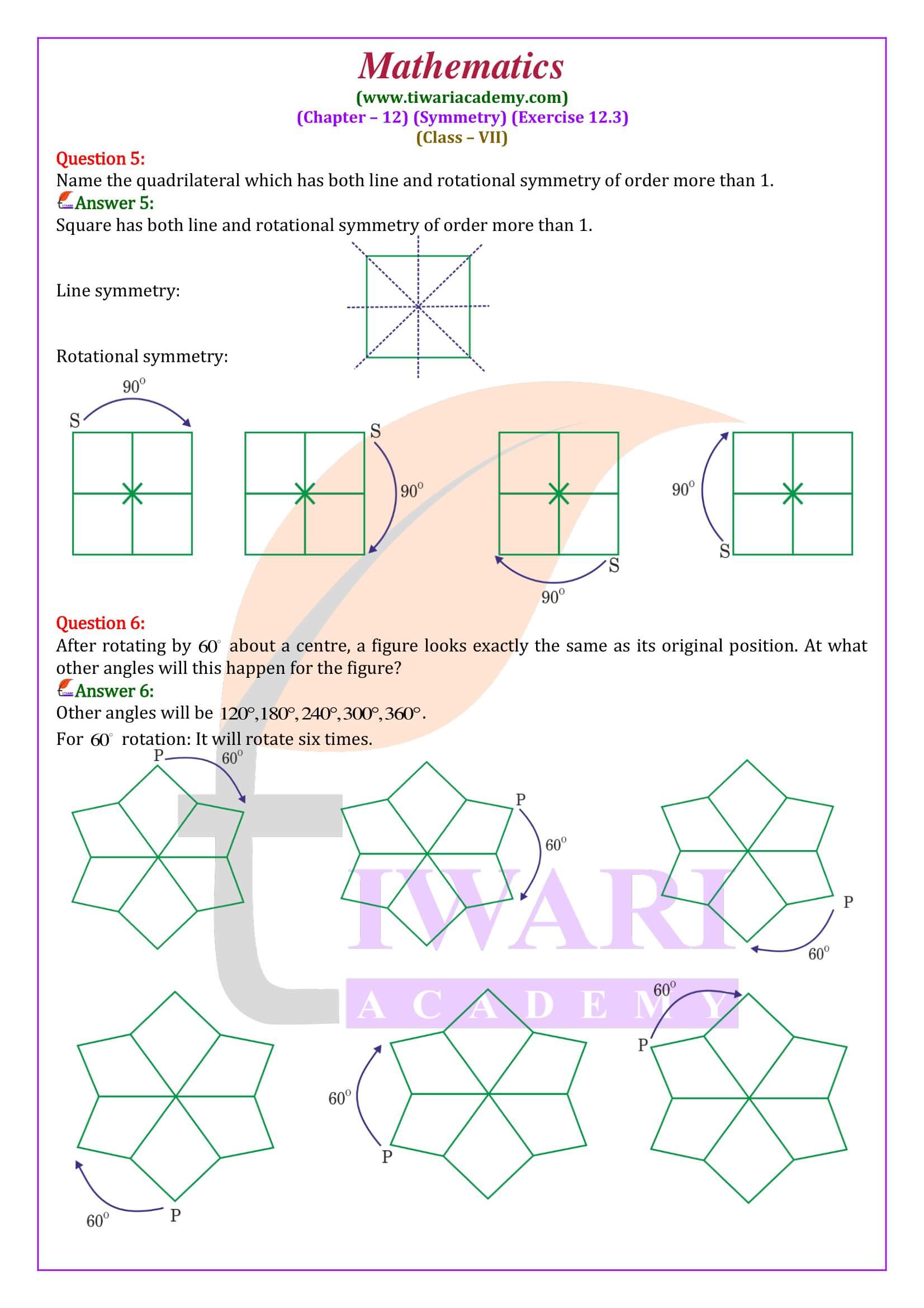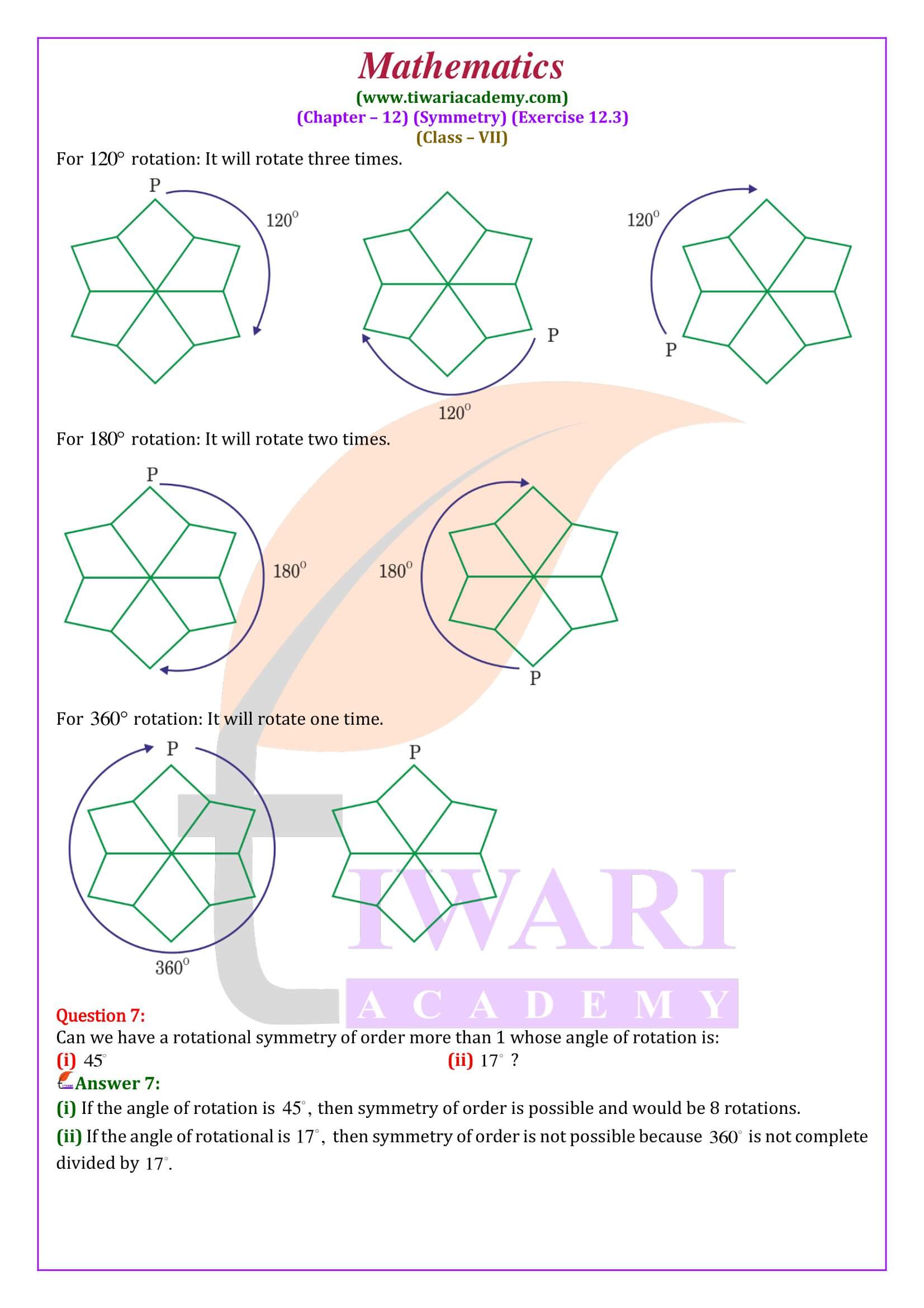NCERT Solutions for Class 7 Maths Chapter 12 Exercise 12.3 Symmetry in Hindi and English Medium based on new NCERT Textbooks for 2025-26. Get here modified solutions of ex. 12.3 class VII mathematics based on revised syllabus and new NCERT books issued for academic session 2025-26.
Class 7 Maths Exercise 12.3 Solution in Hindi and English Medium
| Class: 7 | Mathematics |
| Chapter: 12 | Exercise: 12.3 |
| Chapter Name: | Symmetry |
| Mode of Content: | Text, Images and Videos |
| Academic Year: | CBSE 2025-26 |
| Medium: | Hindi and English Medium |
Class 7 Maths Chapter 12 Exercise 12.3 Solution
All the contents are prepared in easy to understand format. If someone is facing problem to access the contents of Tiwari Academy, please contact us for help. We will help you as soon as possible. Our main motive is to provide NCERT solutions in less efforts.
Class 7 Maths Chapter 12 Exercise 12.3 Solution in Videos
Class 7 Maths Exercise 12.3 Important Questions
Which figure has rotational symmetry but no line symmetry?
A parallelogram has no line of symmetry, but has rotational symmetry of order 2 and also point symmetry.
Which shape shown has only one line of symmetry?
The trapezoid only has one line of symmetry.
Can a shape have rotational symmetry of order 1?
You may notice that no Order 1 exists; this would be a shape that has to turn completely around (360°) to look the same. No object has rotational symmetry of Order 1.
How many lines of symmetry does a circle have?
Circle has infinite lines of symmetry. Oval has two.
Line Symmetry
The line of symmetry can be defined as the axis or imaginary line that passes through the center of the shape or object and divides it into identical halves.
Symmetry of a Circle
The circle is the most perfect symmetrical figure, because it can be rotated around its centre through any angle and at the same time it has unlimited number of lines of symmetry. Observe any circle pattern. Every line through the centre (that is every diameter) forms a line of (reflectional) symmetry and it has rotational symmetry around the centre for every angle.
Name any two figures that have both line symmetry and rotational symmetry.
Two figures that have both line symmetry and rotational symmetry are: Circle and Square.
Summery
1. A figure has line symmetry, if there is a line about which the figure may be folded so that the two parts of the figure will coincide.
2. Regular polygons have equal sides and equal angles. They have multiple (i.e., more than one) lines of symmetry.
4. Mirror reflection leads to symmetry, under which the left-right orientation have to be taken care of. 5. Rotation turns an object about a fixed point. This fixed point is the centre of rotation. The angle by which the object rotates is the angle of rotation. A half-turn means rotation by 1800; a quarter-turn means rotation by 900. Rotation may be clockwise or anticlockwise.
6. If, after a rotation, an object looks exactly the same, we say that it has a rotational symmetry.
7. In a complete turn (of 3600), the number of times an object looks exactly the same is called the order of rotational symmetry. The order of symmetry of a square, for example, is 4 while, for an equilateral triangle, it is 3.
8. Some shapes have only one line of symmetry, like the letter E; some have only rotational symmetry, like the letter S; and some have both symmetries like the letter H. The study of symmetry is important because of its frequent use in day-to-day life and more because of the beautiful designs it can provide us.






